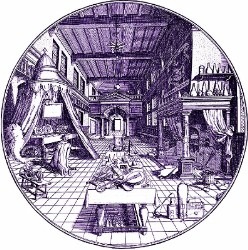

- #OLD ROTATING DISK ANIMATION DESK SKIN#
- #OLD ROTATING DISK ANIMATION DESK SOFTWARE#
- #OLD ROTATING DISK ANIMATION DESK LICENSE#
- #OLD ROTATING DISK ANIMATION DESK WINDOWS#
#OLD ROTATING DISK ANIMATION DESK WINDOWS#
Fixed a bug that caused all windows to be displayed at startup (2.8.1).Added "Material Random" option to bitmap brush.Animated GIF export quality has been improved.Improved the drawing feel of the scatter brush.Improved quality of spreading brush around 1px wide degraded.Text layers can now be merged into a 32 bpp layer.Fixed a display problem with icons in the 3D Perspective window.ACO color palette files can now be read (RGB, grayscale only).Brush post-processing function has been enhanced.When using TabletPC, a bug that sometimes caused the canvas display to rotate during pen operation may have been fixed.
#OLD ROTATING DISK ANIMATION DESK SKIN#
#OLD ROTATING DISK ANIMATION DESK SOFTWARE#
The use of the software downloaded through our site is done at your own discretion and risk and with agreement that you will be solely responsible for any damage to your computer system or loss of data that results from such activities.

We are not legally responsible for a malfunction of this freeware and are not obligated to repair it whatsoever. We are not liable for any detriments including, but not limited to, loss of production, loss of profits, loss of revenue, loss of data, or any other business or economic disadvantage caused by the discontinuation. We may discontinue a part of or an entire freeware without prior notice. If, for any reason, we believe that you have not complied with these terms of service, we may, at our sole discretion, cancel your use of FireAlpaca immediately and without prior notice. Other acts that bring detriment to our company.You shall not, except with our written permission, distribute or commercially exploit the content in any other website, magazine, or publication. This freeware, its content and intellectual property are copyright of PGN Inc.Īny redistribution or reproduction of part or all of the contents in any form is prohibited.
#OLD ROTATING DISK ANIMATION DESK LICENSE#
If you disagree with any part of the terms then you may not download the service.įireAlpaca is a freeware that does not require payment of any license fee for both individual users and commercial use. Your download of this freeware and use of the service is conditioned on your acceptance of and compliance with these terms. If you use our service, you agree to all of the terms listed below. Once you know and understand the disk method, another good application of integrals to check out would be the washer method.Please read these terms carefully before using FireAlpaca ("freeware", or "service") provided by PGN Inc. We know that the center of our disk will always have a y-coordinate of 0 because we rotated our function around the line \(\mathbf\)! Hopefully this has helped you with the disk method, but if there’s still a topic you’d like to learn about take a look at some of my other lessons and problem solutions about integrals. The center point of our disk is labeled (x, 0). Imagine we are trying to find the distance between the two points we labeled. You can see in the drawing above that I drew a copy of the disk we are considering down below the function. In fact, if you look at our drawing, you can see that the radius of each cylinder will simply depend on the x value where it’s sitting. How do we find the radius?Ĭonsidering that each cylinder will be a different size, it seems clear that the radius of each cylinder will depend on which cylinder we’re considering. Thinking back to our example of rotating \(y=x^2\) around the x-axis, let’s determine the radius and height of our cylinders. So in order to find their volumes, we should start with the volume of a cylinder, which is Clearly each disk is a very thin cylinder. Since we are trying to make this integral represent the sum of all of these disks, we need to think about the volume of each disk in particular. The green cylinder in the figure represents one of the infinitely thin disks that we are slicing the figure into.

You can see in this drawing our function has been rotated around the x-axis to create a round cone-like 3-D figure.


 0 kommentar(er)
0 kommentar(er)
